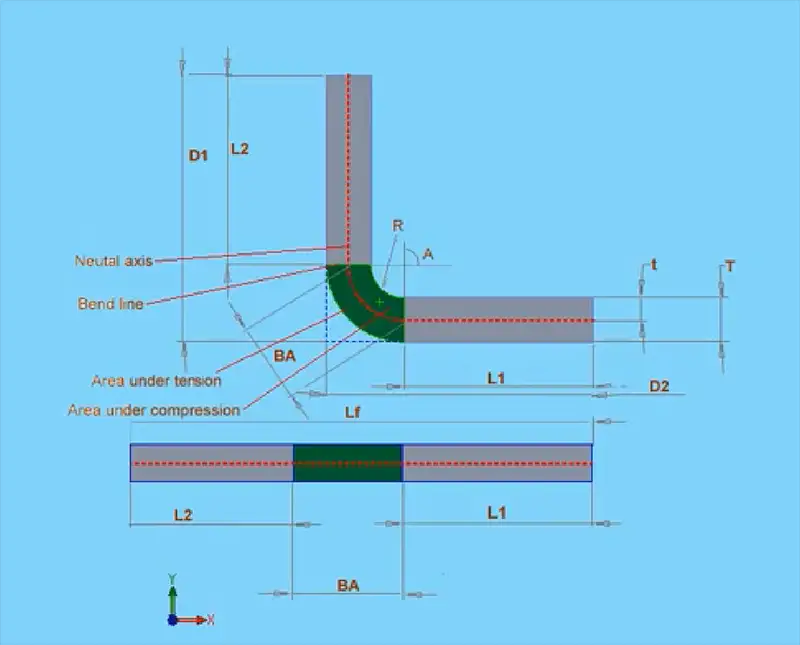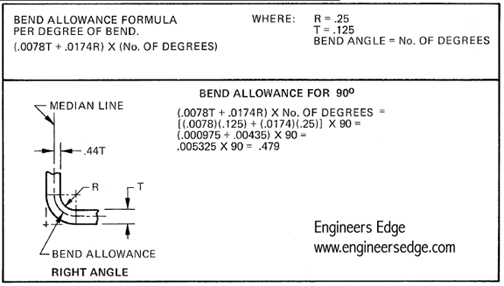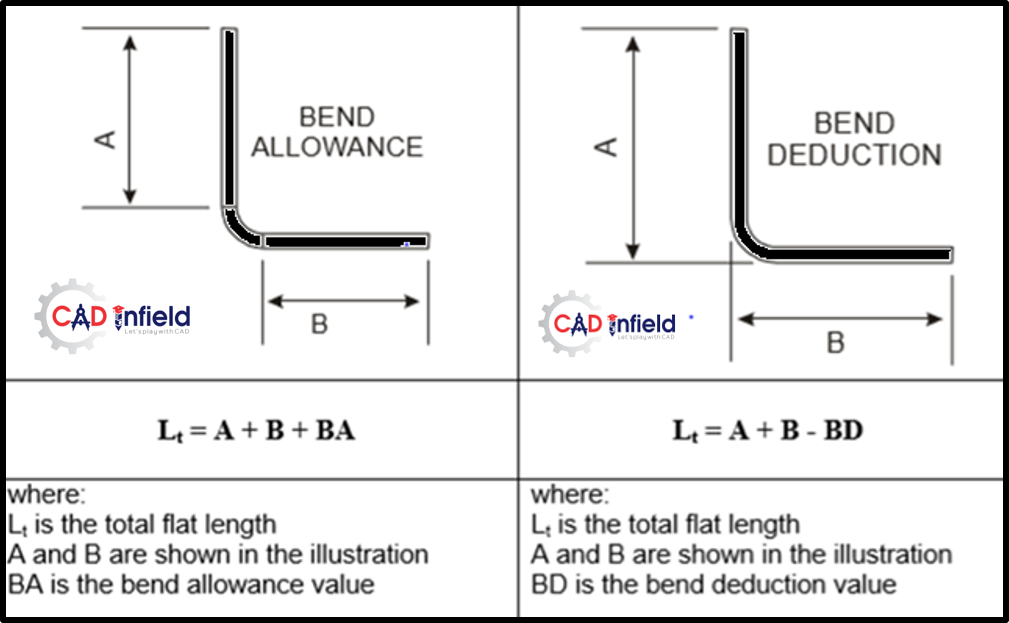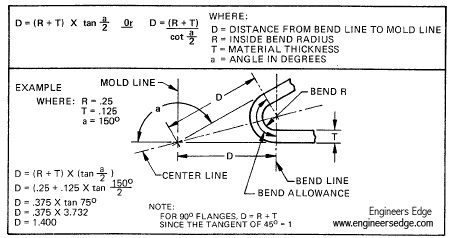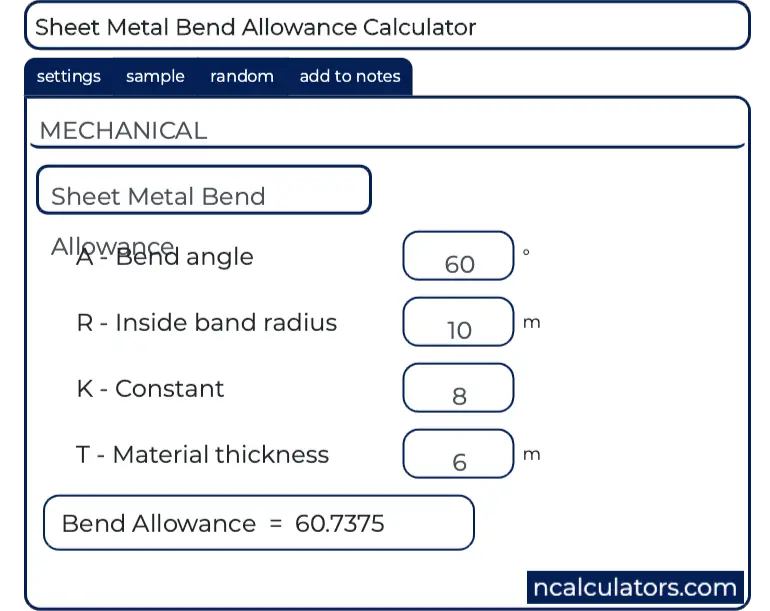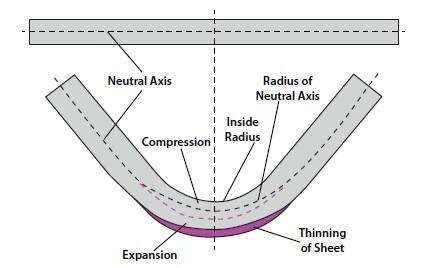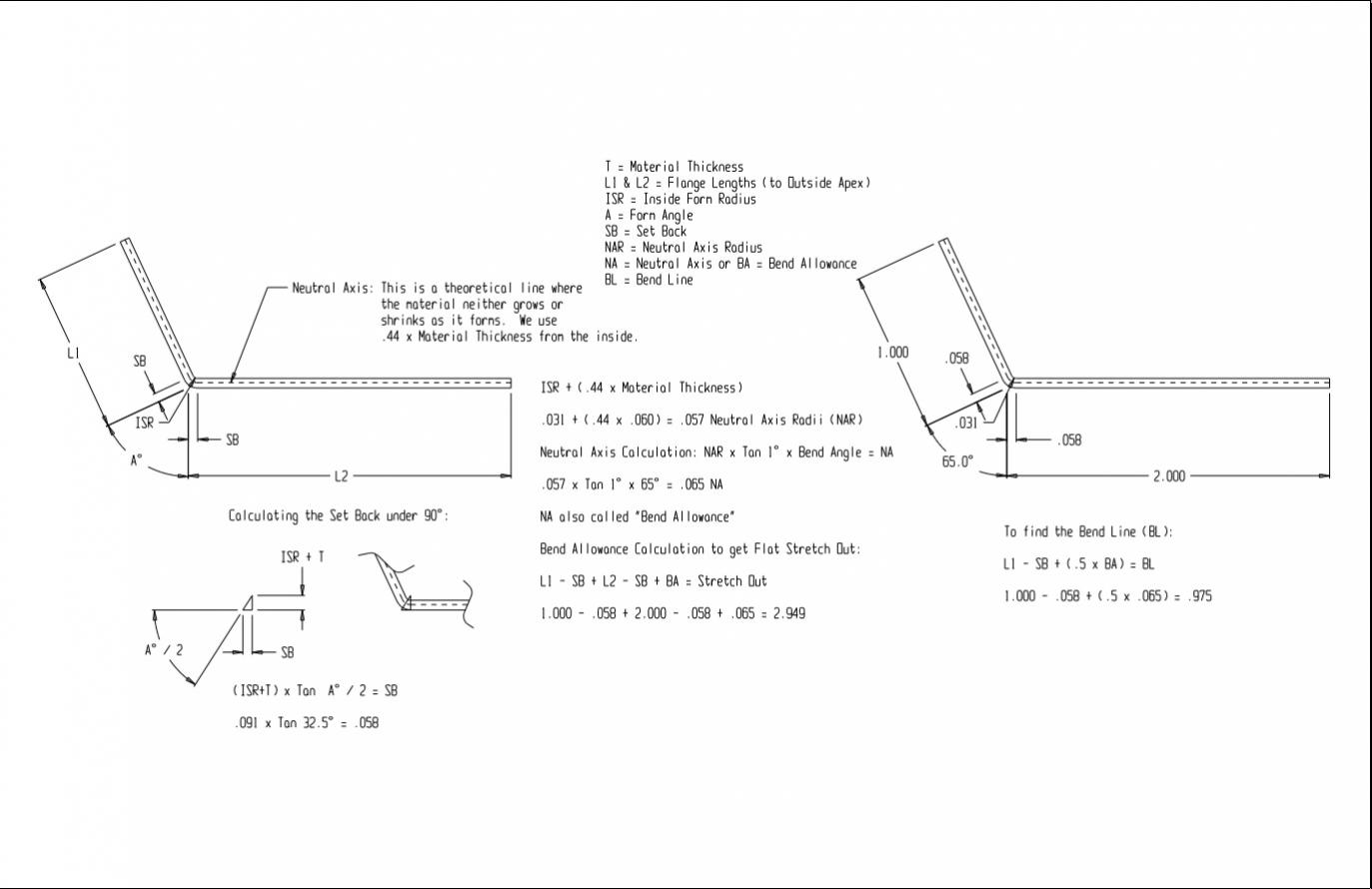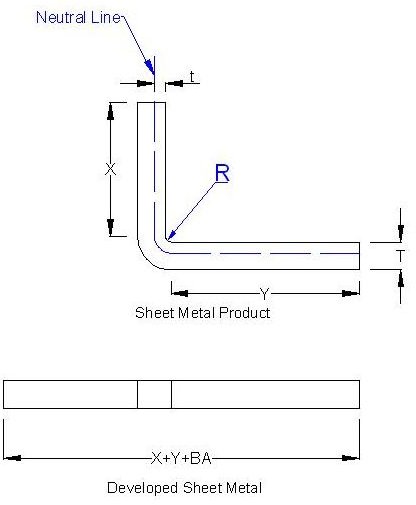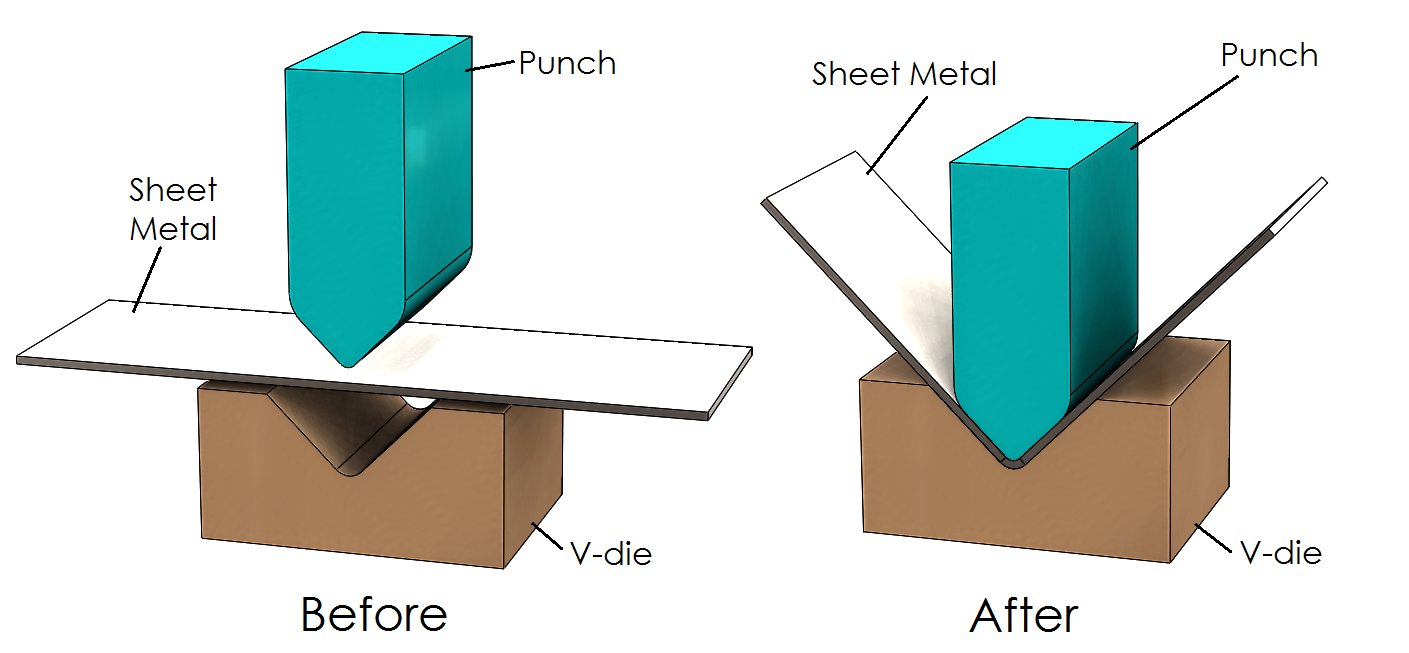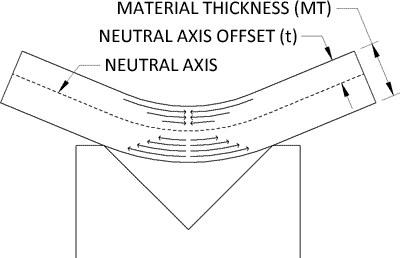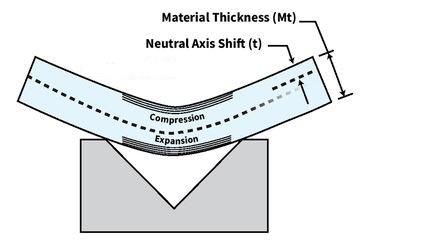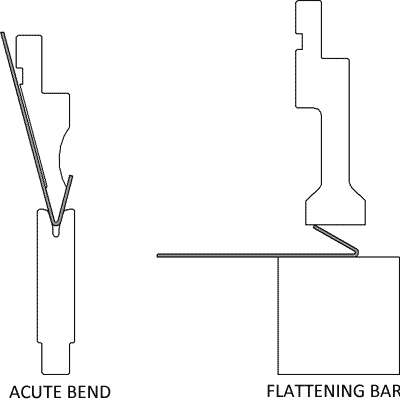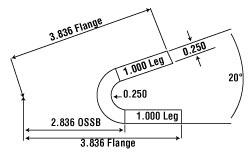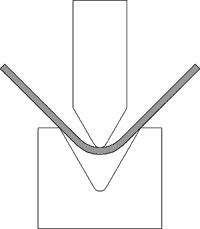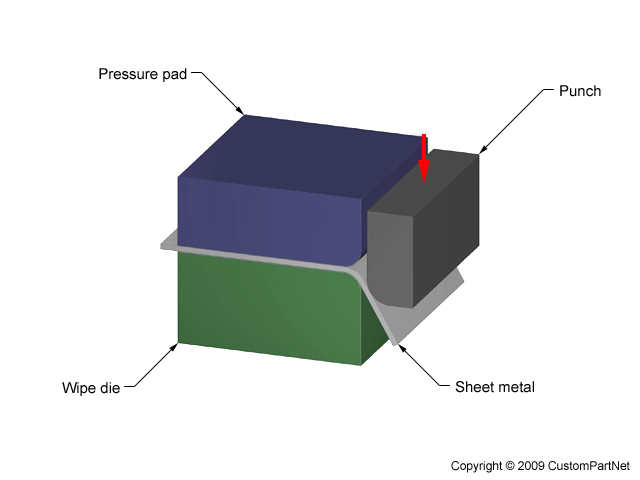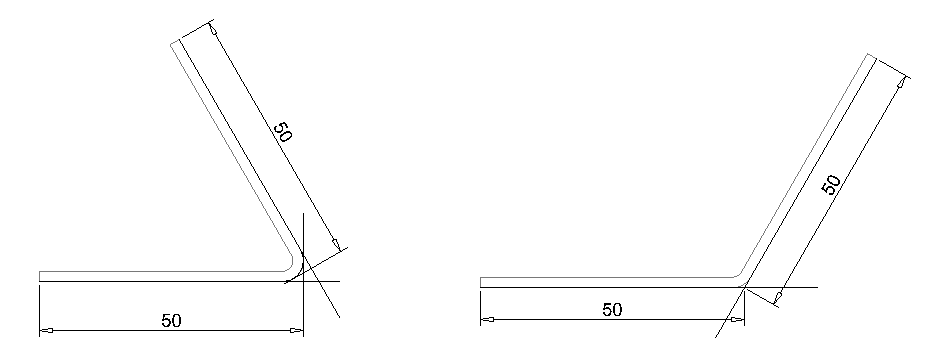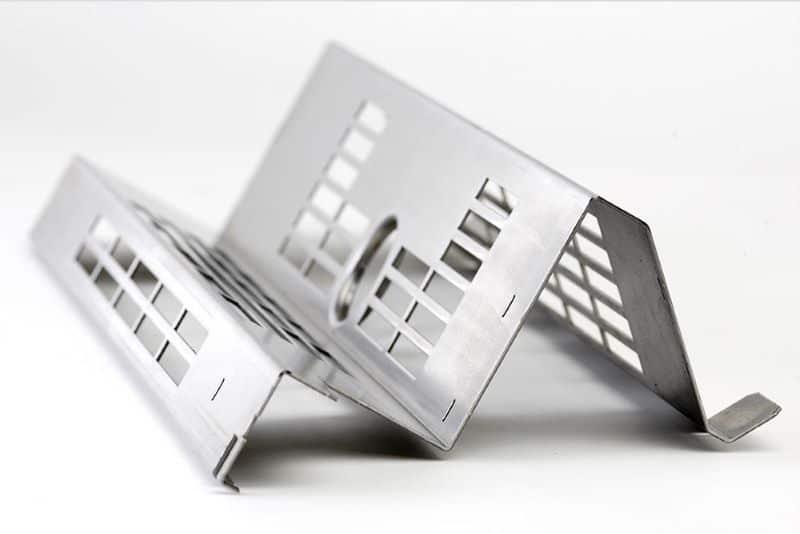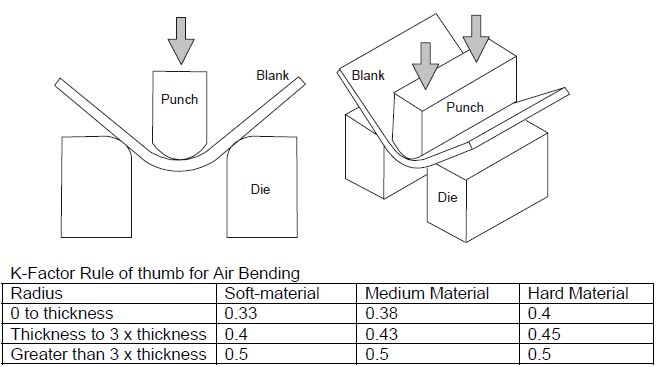Bend Deduction Sheet Metal Example

Working with an included bend angle of 60 degrees a material thickness of 0 062 in an inside bend radius of 0 062 in and a bend allowance ba of 0 187 in you get a negative bend deduction.
Bend deduction sheet metal example. Understanding the bend deduction and consequently the bend allowance of a part is a crucial first step to understanding how sheet metal parts are fabricated. Bend allowance is a measure of how much extra material is required to accommodate a bend in sheet metal this is a function of the bend angle bend radius thickness of the material and a variable called the k factor bend allowances vary based on the angle of the bend the type and thickness of the material and the method used to create the. That means you subtract the negative bd again the same as adding when doing the flat blank calculation. After bending the sheet we need to do some measurements as shown in figure 2.
We will start by calculating the bend allowance. August 29 2020. The bend allowance and bend deduction are two measures that relate the bent length of a piece of sheet metal to the flat length. Bending is one of the most common sheet metal fabrication operations.
When the sheet metal is put through the process of bending the metal around the bend is deformed and stretched. If you compare the length of this part before and after the bending you re going to find that they re different. When the sheet metal is put through the process of bending the metal around the bend is deformed and stretched. The bend deduction is the amount the sheet metal will stretch when bent as measured from the outside edges of the bend.
From there we can calculate the k factor and the bend deduction. Figure 2 illustrates the sheet that is bent with the bend angle of 90 degrees. Although it is an option for calculating a bend in some cad programs such as solid works it is not often referred to in the actual manufacturing process since. Understanding the bend allowance and consequently the bend deduction of a part is a crucial first step to understanding how sheet metal parts are fabricated.
The bend radius refers to the inside radius. The force must exceed the material s yield strength to achieve a plastic deformation. In the example above it is indicated by a dashed blue line. This is done through the application of force on a workpiece.
Also known as press braking flanging die bending folding and edging this method is used to deform a material to an angular shape. The bend allowance is the amount of the neutral axis that bends. In the example above it is indicated by a dashed blue line. Childress last modified date.
Therefore the bend allowance added to the flange lengths is equal to the total flat. You may be wondering what exactly is bend allowance if you ve never worked with sheet metal before.

